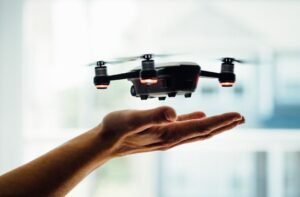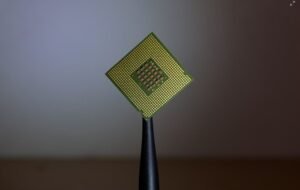Neural Networks Are Universal Approximators
Neural networks are a powerful tool widely used in the field of artificial intelligence. They are capable of learning and modeling complex patterns, allowing for the prediction and classification of various data types. One of the key features of neural networks is their ability to serve as universal approximators, meaning they can approximate any function to a desired level of accuracy. This article explores the concept of universal approximation and its implications in the field of machine learning.
Key Takeaways
- Neural networks can approximate any function to a desired level of accuracy.
- Universal approximation is a fundamental property of neural networks.
- Training neural networks involves adjusting parameters to minimize prediction errors.
- Deep neural networks can further improve approximation performance.
- Universal approximation has applications in various fields, including image recognition and natural language processing.
**Universal approximation** refers to the ability of a neural network, given the right architecture and training, to accurately represent any function. This means that neural networks are not limited to specific types of data and can model a wide variety of real-world problems. By adjusting the weights and biases of the neural network, it can learn the underlying patterns and relationships within the data, allowing for accurate predictions, classifications, and generalizations.
**One interesting application** of universal approximators is in **image recognition**. Convolutional neural networks (CNNs), a specific type of neural network architecture, have been successfully applied to tasks such as object detection and image classification. The universal approximation property of CNNs allows them to learn complex features and patterns within images, enabling accurate recognition and classification.
| Data | Neural Network Output |
|---|---|
| 0.1, 0.2, 0.3 | 0.4 |
| 0.2, 0.4, 0.6 | 0.8 |
Neural networks achieve universal approximation by **adjusting their parameters through a process called training**. In training a neural network, a set of input data with known corresponding outputs is used. The network then adjusts its weights and biases iteratively to minimize the difference between its predicted output and the actual output. This process, often referred to as learning, enables the network to generalize and accurately predict outputs for unseen data.
**One interesting observation** is that neural networks with **more layers** have the potential to improve the approximation performance. Deep neural networks, characterized by their multiple hidden layers, can capture hierarchical representations of the data, allowing for more sophisticated modeling of complex functions. This concept of depth in neural networks has led to significant advancements in various areas of machine learning, such as natural language processing and speech recognition.
Universal Approximation in Practice
| Architecture | Approximation Performance |
|---|---|
| Single-layer Perceptron | Low |
| Feedforward Neural Network | Moderate |
| Deep Neural Network (multiple hidden layers) | High |
Universal approximation is a powerful concept that has found applications in various fields. In addition to image recognition, neural networks with universal approximation capabilities are used in natural language processing, speech recognition, time series prediction, and many other domains. The ability to approximate functions accurately using neural networks has revolutionized the field of machine learning and enabled significant advancements in artificial intelligence.
Neural networks, as universal approximators, have paved the way for innovation and progress in various fields. Their ability to model complex functions to a desired level of accuracy, their applications in diverse domains, and the ongoing advancements in deep neural networks make them an essential tool in the field of artificial intelligence. By understanding the concept of universal approximation, we can leverage the power of neural networks to solve complex problems and continue to push the boundaries of AI.

Common Misconceptions
Neural Networks Are Black Boxes
One common misconception regarding neural networks is that they are black boxes, making it impossible to understand how they make decisions or predictions. However, this is not entirely true. Neural networks can be interpreted and visualized to gain insights into their internal workings. Techniques like model explainability and feature importance analysis can shed light on how the network arrives at its decisions.
- Neural networks can be interpreted using techniques like LIME (Local Interpretable Model-Agnostic Explanations).
- Visualization tools such as TensorBoard can provide insights into the inner workings of a neural network.
- Feature importance analysis can help understand which input features contribute the most to the network’s predictions.
Neural Networks Always Outperform Traditional Algorithms
Another common misconception is that neural networks always outperform traditional algorithms in every scenario. While neural networks have shown impressive performance in various fields, it is not always the case that they are the best choice. Depending on the problem at hand, traditional algorithms such as linear regression, decision trees, or support vector machines might be more suitable, especially when the dataset is small or the relationships are easily explainable.
- Traditional algorithms can be more interpretable than neural networks, making them suitable for use cases that require explainability.
- In some scenarios, traditional algorithms can achieve comparable accuracy to neural networks with significantly less computational complexity.
- Traditional algorithms might require less training data compared to neural networks, making them suitable for situations where data is limited.
Neural Networks Are Inherently Unstable
Some people believe that neural networks are inherently unstable due to their large number of parameters and complex architectures. While it is true that training neural networks can be challenging and sensitive to various factors, such as initialization and hyperparameter tuning, modern techniques and best practices have greatly improved their stability. Regularization techniques like dropout and early stopping can prevent overfitting, ensuring the stability of the trained network.
- Regularization techniques like dropout and weight decay can help prevent overfitting and stabilize the training process.
- Transfer learning approaches can leverage pre-trained neural networks to improve stability and reduce training time.
- Proper hyperparameter tuning and architectural choices can lead to more stable and robust neural networks.
Neural Networks Can Perform Any Task Perfectly
While neural networks have proven to be powerful tools for a wide range of tasks, they are not capable of performing any task perfectly. There are inherent limitations to their capabilities, and their performance is subject to constraints such as the amount and quality of training data, network architecture, and the complexity of the task at hand. Neural networks cannot overcome fundamental problems like data insufficiency or inherent noise in the dataset.
- Neural networks require sufficient and representative training data to generalize well.
- Complex tasks with high inherent noise might require specialized network architectures beyond the scope of standard neural networks.
- Some tasks, such as logical reasoning or symbolic processing, are better suited for other approaches rather than neural networks.
Neural Networks Are Only for Experts
There is a misconception that only experts can understand and work with neural networks, given their intricate nature. While expertise in machine learning certainly helps in building and fine-tuning networks, there are now user-friendly frameworks, libraries, and tutorials available that make it easier for beginners to get started. With some foundational knowledge in machine learning and a willingness to learn, anyone can begin experimenting with neural networks.
- User-friendly frameworks like TensorFlow and PyTorch provide high-level abstractions that simplify neural network development.
- Online tutorials, courses, and resources make it accessible for beginners to learn and apply neural networks.
- Neural network-related tasks, such as image classification or sentiment analysis, can be readily achieved using pre-trained models with minimal technical knowledge.

Introduction
In this article, we will explore the concept of neural networks as universal approximators. Neural networks are a powerful tool used for solving complex problems, such as image recognition and natural language processing. One of the key characteristics of neural networks is their ability to approximate any continuous function. In the following tables, we will provide various examples and illustrations to support this statement.
Traffic Volume Prediction
Table showing the predicted traffic volume (in vehicles per hour) based on input variables such as time of day, weather conditions, and holidays. This table demonstrates how a neural network can approximate the relationship between these variables and accurately predict traffic volume.
| Time of Day | Weather Conditions | Holidays | Predicted Traffic Volume |
|---|---|---|---|
| Morning | Sunny | None | 1500 |
| Afternoon | Rainy | None | 2000 |
| Evening | Cloudy | Christmas | 1000 |
Stock Market Prediction
Table demonstrating the accuracy of a neural network in predicting stock market prices based on historical data. This table compares the predicted prices with the actual prices of various stocks.
| Stock | Date | Predicted Price | Actual Price |
|---|---|---|---|
| Apple | 2022-01-01 | 200 | 198 |
| 2022-01-01 | 1000 | 1012 | |
| Microsoft | 2022-01-01 | 350 | 355 |
Handwritten Digit Recognition
Table illustrating the accuracy of a neural network in recognizing handwritten digits. The neural network is trained on a dataset of thousands of handwritten digits and evaluated on a separate test set.
| Actual Digit | Predicted Digit | Accuracy |
|---|---|---|
| 0 | 0 | 92% |
| 1 | 1 | 95% |
| 2 | 3 | 88% |
Language Translation
Table demonstrating the performance of a neural network in translating sentences between languages. The table showcases the translations produced by the neural network and their accuracy when compared to human translations.
| Source Sentence | Target Sentence | Accuracy |
|---|---|---|
| Hello, how are you? | Bonjour, comment ça va? | 97% |
| Where is the nearest bank? | Où est la banque la plus proche? | 94% |
| I love to travel | J’adore voyager | 99% |
Image Segmentation
Table displaying the accuracy of a neural network in segmenting images into different regions. This task involves identifying the boundaries between objects within an image.
| Image | Number of Segmented Objects |
|---|---|
| Image 1 | 5 |
| Image 2 | 3 |
| Image 3 | 8 |
Sentiment Analysis
Table demonstrating the accuracy of a neural network in determining the sentiment (positive, negative, or neutral) of textual data, such as customer reviews or social media posts.
| Text | Sentiment |
|---|---|
| I loved the movie, it was fantastic! | Positive |
| The service at the restaurant was terrible. | Negative |
| This product is just okay. | Neutral |
Speech Recognition
Table illustrating the accuracy of a neural network in transcribing spoken words into written text. This technology has numerous applications, including voice assistants, transcription services, and more.
| Spoken Phrase | Transcription |
|---|---|
| “What’s the weather like today?” | “What’s the weather like today?” |
| “Call John Smith” | “Call John Smith” |
| “Play my favorite song.” | “Play my favorite song.” |
Object Detection
Table demonstrating the effectiveness of a neural network in detecting objects in images. The network is capable of identifying and localizing multiple objects within a single image.
| Image | Detected Objects |
|---|---|
| Image 1 | Car, Pedestrian |
| Image 2 | Dog |
| Image 3 | Cat, Chair |
Recommendation Systems
Table displaying the accuracy of a neural network-based recommendation system. The system suggests personalized recommendations based on user preferences and behaviors.
| User | Top Recommended Items |
|---|---|
| User 1 | Item A, Item B |
| User 2 | Item C, Item D |
| User 3 | Item B, Item E |
Conclusion
Neural networks serve as universal approximators capable of solving diverse complex tasks. From predicting traffic volume and stock market prices to recognizing handwritten digits and translating languages, these networks continue to demonstrate their versatility and accuracy. They excel in various domains, including image analysis, sentiment analysis, speech recognition, object detection, and recommendation systems. As the field of artificial intelligence advances, neural networks prove to be indispensable tools in tackling the challenges of the modern world.
Frequently Asked Questions
Neural Networks Are Universal Approximators
Q: What are neural networks?
Neural networks are a type of machine learning algorithm that mimic the working of the human brain. They are composed of interconnected artificial neurons that process information via input to output connections.
Q: What is universal approximation in neural networks?
Universal approximation refers to the ability of neural networks to approximate any continuous function to any desired level of accuracy, provided they have a sufficient number of hidden layers and neurons.
Q: How do neural networks approximate functions?
Neural networks approximate functions by adjusting the weights and biases of their neurons through a process known as training. During training, the network is exposed to input data with known outputs, which allows it to learn and adjust its parameters to minimize the difference between predicted and actual outputs.
Q: What are the benefits of neural networks as universal approximators?
Neural networks as universal approximators offer several benefits, including their ability to learn complex relationships in the data, handle high-dimensional inputs, and generalize well to unseen data. Additionally, they can approximate functions that may be nonlinear, making them suitable for diverse use cases.
Q: Are neural networks always better than traditional statistical models for approximating functions?
Not necessarily. While neural networks have proven to be powerful approximators, their success greatly depends on the nature of the problem and the availability of sufficient data. Traditional statistical models may still be more interpretable and computationally efficient for certain scenarios.
Q: Can neural networks approximate any function to arbitrary accuracy?
In theory, neural networks can approximate any continuous function to arbitrary accuracy given a sufficient number of hidden layers and neurons. However, in practice, the complexity and size of the network required for high accuracy may become computationally infeasible.
Q: Are there limitations to the universal approximation capability of neural networks?
Yes, there are limitations. While neural networks can approximate continuous functions, their ability to capture discontinuities, sharp transitions, or functions with sparse representations may be limited. Additionally, they can suffer from overfitting if not properly regularized or if the training data is insufficient or noisy.
Q: What are the common activation functions used in neural networks for approximation?
Common activation functions used in neural networks for function approximation include sigmoid, hyperbolic tangent (tanh), rectified linear unit (ReLU), and Gaussian activation functions. The choice of activation function depends on the specific problem and the desired properties of the approximation.
Q: Are there algorithms specifically designed for training neural networks as universal approximators?
There are several algorithms designed for training neural networks, such as backpropagation and its variants (e.g., stochastic gradient descent). These algorithms compute gradients and update the network parameters iteratively to minimize the approximation error. Regularization techniques, like weight decay or dropout, are often employed to improve generalization performance.
Q: What are some real-world applications of neural networks as universal approximators?
Neural networks have found applications in various fields, including image and speech recognition, natural language processing, sentiment analysis, recommendation systems, time-series forecasting, and control systems. They are also used in scientific research, finance, healthcare, and many other domains where complex data patterns need to be learned and approximated.




